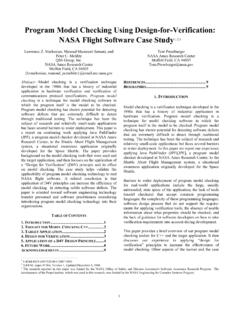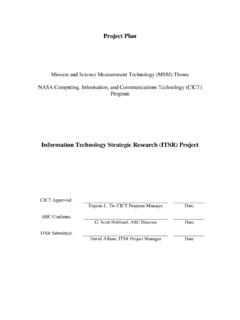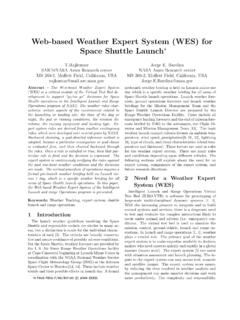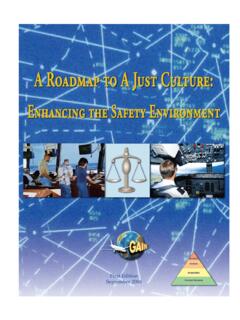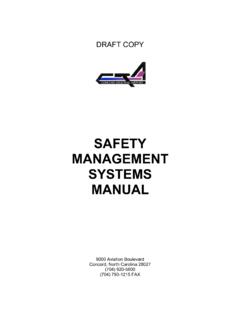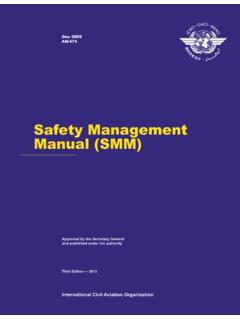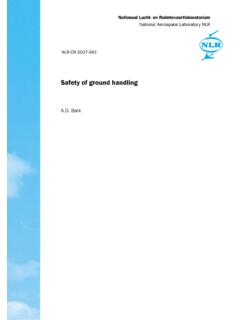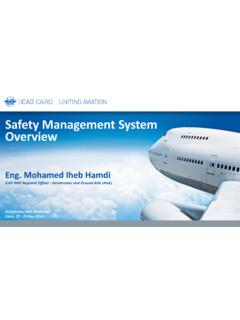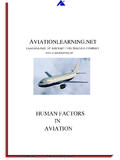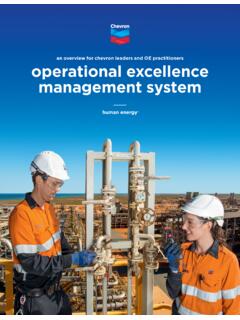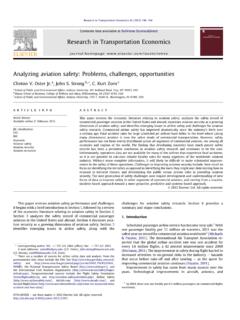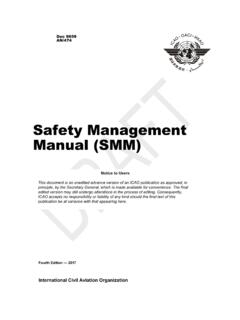Transcription of COCKPIT CHECKLISTS: CONCEPTS, DESIGN, AND USE
1 Human Factors 35(2), pp. 28-43. COCKPIT CHECKLISTS: CONCEPTS, DESIGN, AND USE. Asaf Degani San Jose State University Foundation San Jose, CA. Earl L. Wiener University of Mami Coral Gables, FL. ABSTRACT. Although the aircraft checklist has long been regarded as a foundation of pilot standardization and COCKPIT safety , it has escaped the scrutiny of the human factors profession. The improper use, or the non-use, of the normal checklist by flight crews is often cited as a major contributing factor to aircraft accidents. This paper reports the results of a field study of flight- deck checklists, and examines this seemingly mundane, yet critical device, from several perspectives: its functions, format, design, length, usage, and the limitations of the humans who must interact with it.
2 Certain socio- technical factors, such as the airline culture, COCKPIT resource management, and production pressures that influence the design and usage of this device are also discussed. Finally, a list of design guidelines for normal checklists is provided. While the focus of this paper is on the air transport industry, most of the principles discussed apply equally well to other high-risk industries such as maritime transportation, power production, weapons systems, space flight, and medical care. BACKGROUND. COCKPIT Check Procedure (a) Each certificate holder shall provide an approved COCKPIT check procedure for each type of aircraft. (b) The approved procedures must include each item necessary for flight crewmembers to check for safety before starting engines, taking off, or landing, and in engine and system emergencies.
3 The procedure must be designed so that a flight crewmember will not need to rely upon his memory for items to be checked. (c) The approved procedures must be readily usable in the COCKPIT of each aircraft and the flight crew shall follow them when operating the aircraft. (Federal aviation Regulation ). Recently, within a 25-month period, there were three major airline accidents in which the misuse of a checklist was determined by the National Transportation safety Board (NTSB) to be one of the probable causes of accident. In the first, Northwest Airlines Flight 255, an MD-80, crashed shortly after takeoff from Detroit Metro Airport following a no-flap/no-slat takeoff (NTSB, 1988b). In the second, Delta Air Lines Flight 1141, a B- 727, crashed shortly after lifting off from Dallas-Fort Worth International Airport, following a no-flap/no-slat takeoff (NTSB, 1989).
4 In the third, USAir Flight 5050, a B- 737, ran off the runway at LaGuardia Airport and dropped into adjacent waters, following a mis-set rudder trim and several other problems (NTSB, 1990). Testifying before the safety Board's public hearing on the Northwest Airlines Flight 255. accident, the second author of this paper stated with respect to checklist presentation that he did not know of any human factors research on how a checklist should be . (NTSB, 1988b, ). This was confirmed when the authors performed an intensive search, through and Western European databases, for any literature about this topic. The safety Board had previously recognized the importance of checklist use and its critical role in the safety of flight operations in a 1969 recommendation following a Pan American World Airways B-707 crash after a no-flap takeoff.
5 This recommendation called for Air carrier COCKPIT checklists to be reviewed in an effort to ensure that each list provides a means of reminding the crew, immediately prior to takeoff, that all items critical for safe flight have been accomplished (NTSB, 1969). It took 18 years and a tragic accident before the safety Board recognized the problems with the human factors aspects of checklist design, display, and procedure. Following the Northwest accident, the NTSB recommended that the Federal aviation Administration (FAA) convene a human-performance research group to determine ..if there is any type or method of presenting a checklist which produces better performance on part of user personnel, and for the FAA to recommend checklist typography criteria for commercial operators (NTSB recommendations A-88-068 and A-88-072).
6 Checklist problems are not confined to aviation ; they also prevail in other industries such as maritime transportation, weapons systems, space flight, and medical care. In the nuclear industry, operators use paper checklists for normal and abnormal procedures as well as for scheduled maintenance tasks; this use also leads to checklist errors and omissions (Swain and Guttman, 1983; H. P. Van Cott, personal communication, 1988). Traditionally these and other high-risk industries have looked to aviation for guidance in such common problems. Accordingly, while this paper addresses the COCKPIT checklist, we believe that our analysis, findings, and the list of guidelines presented at the end of this paper will apply to other endeavors as well. METHODS. The intent of this research was to study and document the role of the flight-deck checklist within the socio-technical matrix of procedures, operators, manufactures, COCKPIT -2- systems, management, and the regulating agency, , the Federal aviation Administration (FAA).
7 This study consisted of a combination of three approaches: 1. A field study in which we observed flight crews in actual operations. 2. Interviews with flight crews from seven major airlines. 3. Examination of three databases of aircraft accidents and incidents in which checklists were implicated. Our purpose was to examine checklist design and usage from several perspectives. The study was not intended to provide statistical estimates. Field Study A field study of checklist usage was conducted at one major airline employing both short and medium range aircraft. We observed (from the COCKPIT observer seat) flight crews in their daily line operation. This method, direct and non-intrusive observation, has been previously used in several aviation human factors studies that focused on the operational environment (Curry, 1985; Lyall, 1990; Wiener, 1985, 1989).
8 For a further commentary regarding the problems and limitations of collecting data in the airline COCKPIT environment, see Wiener (1985, pp: 74-75). Forty-two crews were observed during 72 flights (legs) totaling about 140 flight hours. In order not to bias the data, the crews were not told about the specific purpose of the observations, nor were any notes taken or forms filled out by the observers during the flights. Interviews Interviews with pilots from seven major airlines were conducted in coordination with the Air Line Pilots Association. This sample consisted of ten captains and five first officers. The participants were asked several questions regarding use of checklists at their current airline and other organizations they had flown for in the past (military, corporate, commuter airlines, etc.)
9 Incident/Accident Reports Three aviation databases were searched by the authors in order to obtain checklist related incident/accident reports: 1. NTSB accident/incident database (NTSB, 1988a, 1988c). 2. International Civil aviation organization (ICAO) accident database (ICAO, 1988). 3. NASA's aviation safety Reporting System (ASRS) incident database (ASRS, 1987, 1989). The NTSB and ICAO databases reports are the result of formal investigations. The ASRS, however, is a voluntary reporting system in which pilots, controllers, and others can submit subjective accounts about safety -related aviation incidents. The information derived from this database, since reporting is voluntary, may reflect reporting biases. -3- Nevertheless, the power of the ASRS lies in the report narrative.
10 The reporters detail incidents and situations; they explain what happened, why it happened, and sometimes add suggestions for improvements. The reports obtained from the three databases were later classified according to phase of flight and source of error, in an attempt to determine the factors that influence checklist incidents/accidents. The narratives provided in this paper do not represent a statistical sampling; they were included to be illustrative. WHAT IS A CHECKLIST? The major function of the flight deck checklist is to ensure that the crew will properly configure the airplane for any given segment of flight. It forms the basis of procedural standardization in the COCKPIT . The complete flight checklist is sub-divided into specific task-checklists for almost all segment of the flight, , PREFLIGHT, TAXI, BEFORE.
